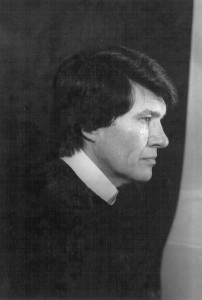
My grandson is taking a course in art history at his German university. When it came time to write the paper, I got the “help!” call. He had been assigned a quotation written by Gustave Courbet (1819-1877) in a letter to a colleague. In his letter, Courbet put forth his idea that artists must paint the history of their own time. Any work that depicts the history of a prior time is a “falsification” of the true intent and responsibility of the artist. My mind, of course, then took me to Courbet himself and his somewhat enigmatic and often troublesome life view.
Courbet is considered the “father” of Realism. In an era when, according to the Academy, historical painting was the highest calling, Courbet chose to paint scenes of everyday life—history in the making. Problem was that he depicted the lower classes, the peasants, those whom life had passed by. Critiques accused him of exalting the ugly, devoid of any of the typically French grandeur found in historical painting. And Courbet exalted the ugly on larger-than-life canvases. He believed that if the artist painted the historical events of the past without real and present knowledge of the event, he was nothing more than a fraud. The Stone Breakers—painted in 1849-1850—showed two peasants, one older and one younger, breaking rocks. Burial at Ornans depicted the internment of a Courbet family member, the grave site surrounded by realistic figures devoid of any sentiment or grief. Life was tough and they knew it. Courbet was not about to make a Burial of Count Orgaz out of his realistic depiction of death in all of its reality.

The notorious twentieth-century poet-playwright Guillaume Apollinaire saw a connection between the realism of Courbet and his esteemed Cubist painters. In his little-known work of 1913, Les Peintres Cubistes, Apollinaire called Courbet the “father of the new painters.” Courbet had abandoned the abstract ideals of beauty for realism, often sordid realism. And in his abandonment of the accepted standard of the French Academy, he opened the way for modernist art.
Both Courbet and Cézanne are credited by art historians with paving the way for the Cubists. Cézanne approached the process of seeing through a dialectical method. Courbet approached the same process through materialism, an emphasis on material reality. Cubism can be considered as a combination of the two. Both transcended the conventional ways of seeing nature. For Courbet, the density and weight of the subject was of primary importance. For the Cubists, the cube-like figures were endowed with physical presence.
By 1912, the Cubists were enjoined on the hermetic phase of the style, what is often called analytical Cubism. It was in a sense a realist movement, the painting of ordinary subjects in a detailed manner, albeit cubistic forms. In Picasso’s Demoiselles d’Avignon, often labeled the first Cubist painting, there is depth, but no illusion of iconic beauty. In Courbet, there is depth, but no illusion of iconic beauty. And to the Academy, both would represent the antithesis of beauty!

Returning to Courbet’s The Stone Breakers we find a glimpse into the social realism of the era. This is poverty and “sweat of the brow” hard work. But it is an accurate representation, devoid of any hint of nobleness or pride in the task. Picasso’s Bottle, Glass, and Fork depicts objects on a café table, and it is meant to be an accurate representation of those objects. Both present realism as seen through the eye of the painter. As an early Cubist, Picasso’s underlying goal was to present an inclusive view of varied perspectives of the object. Any associations made in the mind of the viewer could only enhance the subject. Might the same be true of Courbet’s The Stone Breakers? What the mind of the viewer brings to the painted canvas can only serve to enhance the realism of the subject.
As art history moves through the progression of styles and artistic representations a beautifully organized pattern is revealed. Just as Courbet turned his back on the grandiose history of the Academy winners, so the Cubists rejected the impressionistic play of light on the surface of the object. All of it is realism. What is realistic, after all, must be defined by the painter’s eye. And that will be as varied as the countless numbers of painters themselves. But perhaps best not to mention any of this Courbet and Cubism thought to the grandson!
I must conclude by tipping my hat and bidding a fond farewell to my colleague, Professor Charles Jeffress, who died last month. Charles Jeffress was a painter’s painter. Long-time professor of art at Louisiana College, he gave of his time and immense talent to this community. All who knew him would profess him to be a true gentleman and artist extraordinaire. He will be deeply missed.









